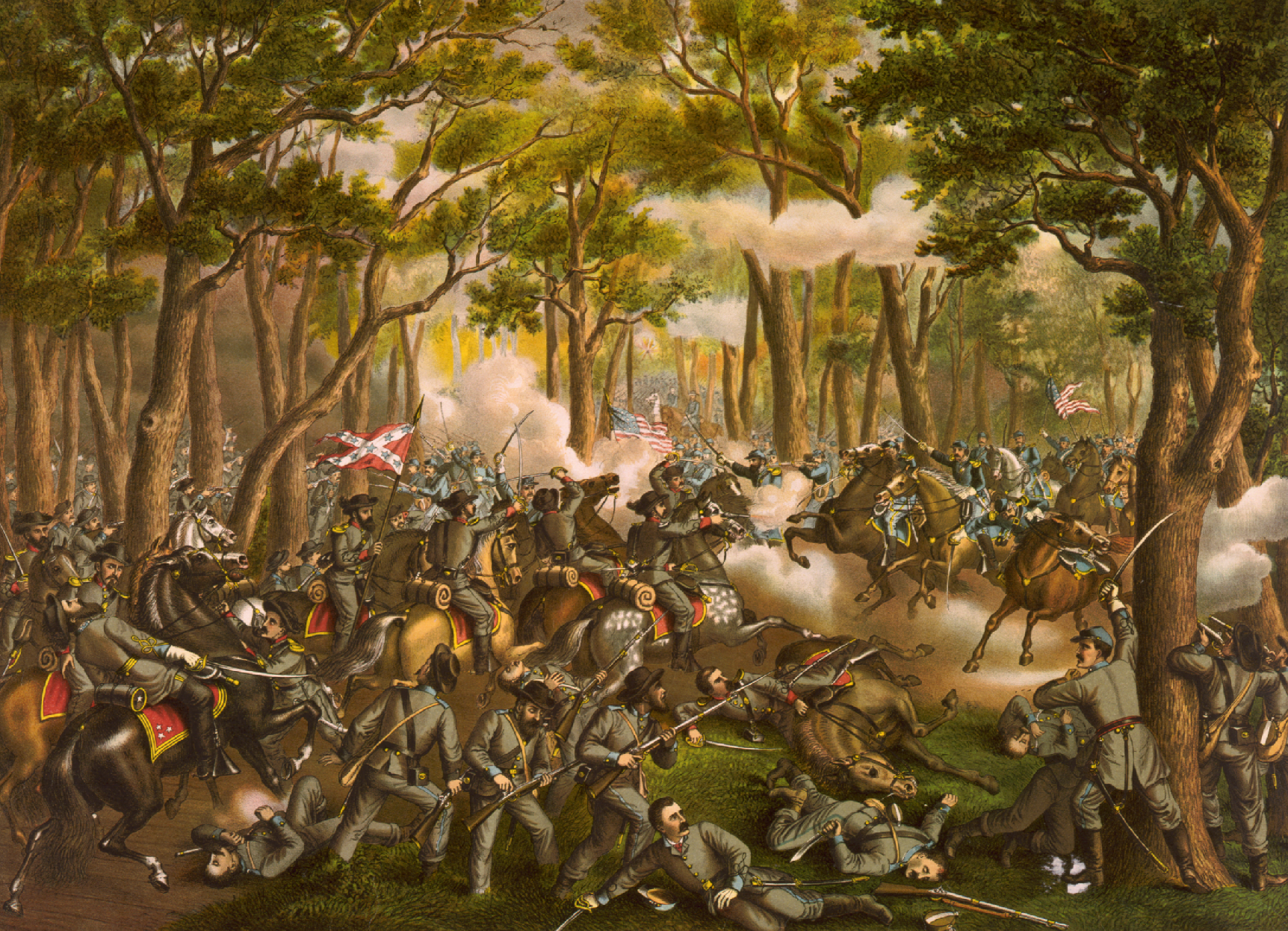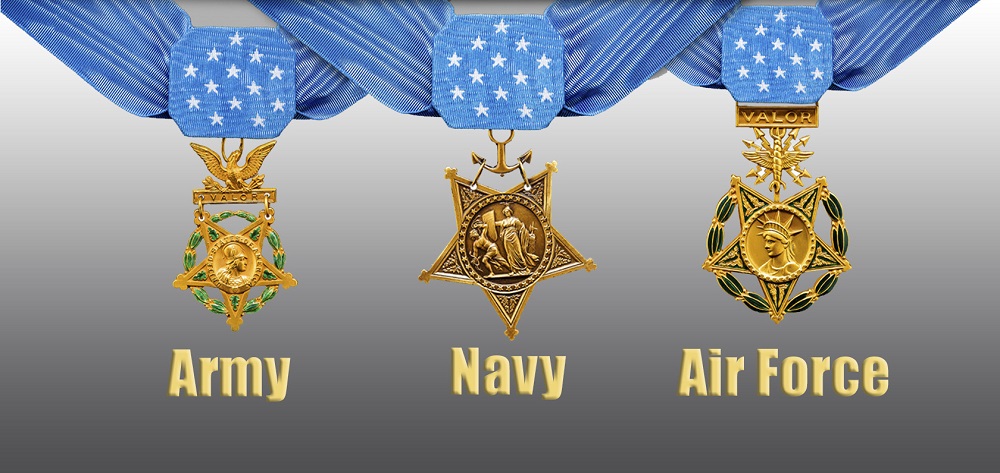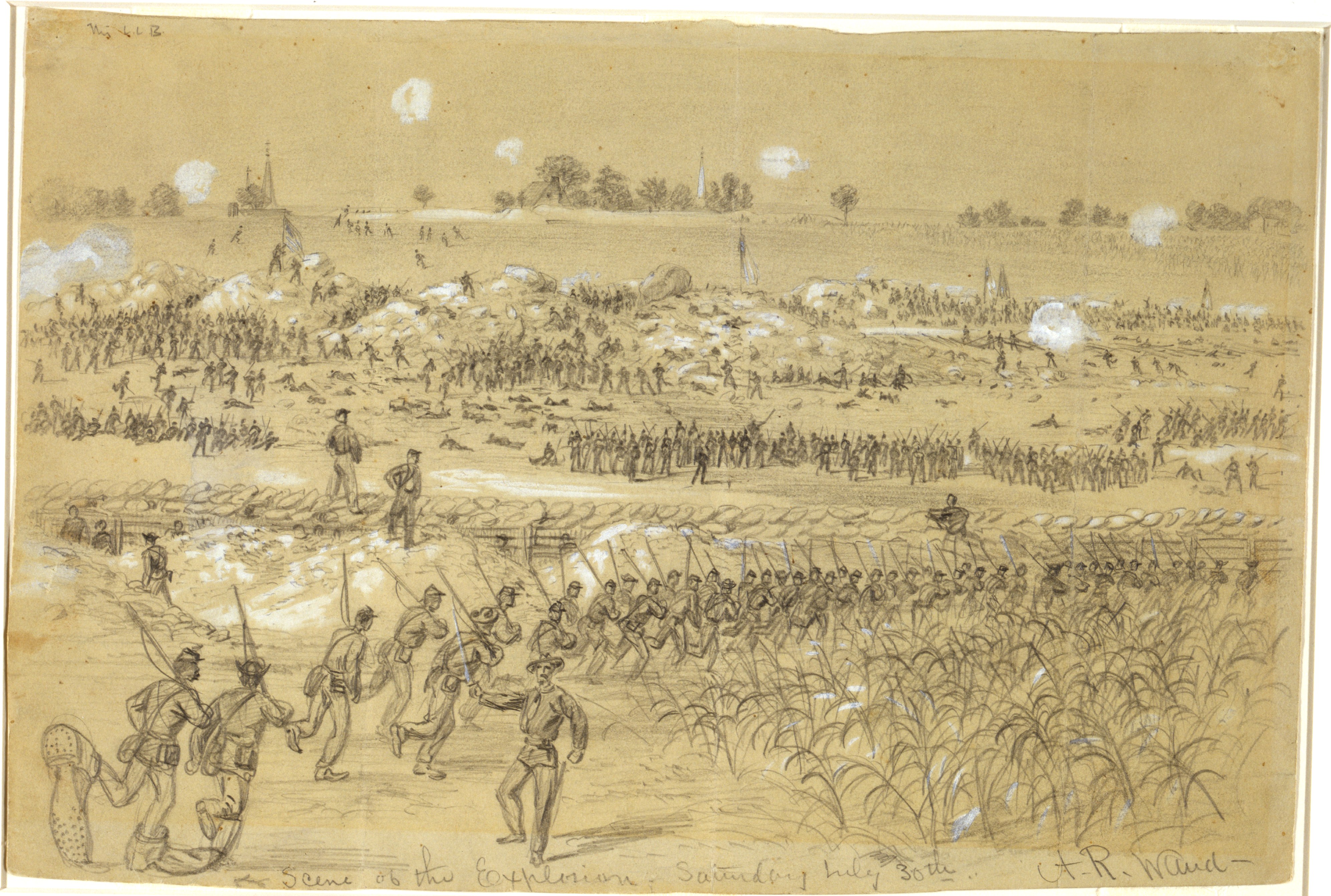|
Patrick H. Monaghan
Patrick Henry Monaghan (November 19, 1843 – October 22, 1917) was a native of Ireland who fought for the federal government of the United States (Union Army) during the American Civil War as a member of Company F of the 48th Pennsylvania Infantry. He received America's highest award for valor, the U.S. Medal of Honor, for recapturing the regimental flag of the 7th New York Heavy Artillery on June 17, 1864 while fighting in the Siege of Petersburg, Virginia. Formative years Born on November 19, 1843, Patrick H. Monaghan was a native of Belmullet, County Mayo, Ireland. In 1848, when he was five years old, Monaghan emigrated from Ireland and, after arriving in America, settled with his family in Schuylkill County, Pennsylvania. Educated initially in the public school in Minersville, Monaghan then went on to graduate from the Normal School. Civil War On August 12, 1861, Patrick H. Monaghan became one of the early responders to U.S. President Abraham Lincoln's call for volunteers ... [...More Info...] [...Related Items...] OR: [Wikipedia] [Google] [Baidu] |
Belmullet
Belmullet (, IPA:[ˌbʲeːlənˠˈwʊɾˠhəd̪ˠ]) is a coastal Gaeltacht town with a population of 1,019 on the Mullet Peninsula in the barony (Ireland), barony of Erris, County Mayo, Republic of Ireland, Ireland. It is the commercial and cultural heart of the barony of Erris, which has a population of almost 10,000. According to the 2016 census 50% of people in the town were able to speak Irish while only 4% spoke it on a daily basis outside the education system. Belmullet has two bays, Blacksod Bay and Broadhaven Bay, linked by Carter's Canal running through the town. History The origin of the name ''Belmullet'' is not clear. It may have come from Irish ''Béal Muileat'' or ''Béal an Mhuileat'', which has been translated as "mouth of the isthmus". Bernard O'Hara in ''Mayo: Aspects of its Heritage'' suggests that "A change from 'L' to 'R', which is quite common in Irish, may have given ''Béal an Mhuireat'' which in turn became ''Béal an Mhuirhead''". It has also been sugg ... [...More Info...] [...Related Items...] OR: [Wikipedia] [Google] [Baidu] |
Siege Of Knoxville
The siege of Knoxville (November 19 – December 4, 1863) saw Lieutenant General James Longstreet's Confederate States Army, Confederate forces besiege the Union (American Civil War), Union garrison of Knoxville, Tennessee, led by Major General Ambrose Burnside. When Major General William T. Sherman approached Knoxville with an overwhelming Union force, Longstreet ended the siege on December 4 and withdrew northeast. The siege was part of the Knoxville campaign of the American Civil War. In August and September 1863, Burnside's Army of Ohio carried out a nearly bloodless invasion of East Tennessee, an area that included a substantial pro-Union population. Burnside's occupying force was thrown on the defensive when Longstreet's corps and Major General Joseph Wheeler's cavalry launched a counter-invasion from the southwest in November. Longstreet missed his chance to smash the Union forces in the field when Burnside conducted a successful fighting withdrawal to Knoxville. When Long ... [...More Info...] [...Related Items...] OR: [Wikipedia] [Google] [Baidu] |
President Abraham Lincoln
Abraham Lincoln ( ; February 12, 1809 – April 15, 1865) was an American lawyer, politician, and statesman who served as the 16th president of the United States from 1861 until his assassination in 1865. Lincoln led the nation through the American Civil War and succeeded in preserving the Union, abolishing slavery, bolstering the federal government, and modernizing the U.S. economy. Lincoln was born into poverty in a log cabin in Kentucky and was raised on the frontier, primarily in Indiana. He was self-educated and became a lawyer, Whig Party leader, Illinois state legislator, and U.S. Congressman from Illinois. In 1849, he returned to his successful law practice in central Illinois. In 1854, he was angered by the Kansas–Nebraska Act, which opened the territories to slavery, and he re-entered politics. He soon became a leader of the new Republican Party. He reached a national audience in the 1858 Senate campaign debates against Stephen A. Douglas. Linco ... [...More Info...] [...Related Items...] OR: [Wikipedia] [Google] [Baidu] |
Minersville, Pennsylvania
Minersville is a borough in Schuylkill County, Pennsylvania, United States. Anthracite coal deposits are plentiful in the region. The population was 4,388 at the 2020 census. Minersville is located west of Allentown, northwest of Philadelphia, and west of New York City. History In the year 1783, a settler by the name of Adolph Oliver Busch traveled through the valley between the Thomaston Mountains and the Gap Rocks. At this junction, several mountain streams converged where this settler built a log cabin and a sawmill on the west Branch of the Schuylkill River, just below the mouth of Wolf Creek. Shortly thereafter, he built a tavern on the South Side of the Sunbury Trail on the present site of the Saint Michael the Archangel Church. This tavern was referred to as the "Half Way House", because it was half-way between Reading and Sunbury. The Sunbury Trail was the first road through Schuylkill County and was known as the Kings Highway which was authorized by the Crown of En ... [...More Info...] [...Related Items...] OR: [Wikipedia] [Google] [Baidu] |
Schuylkill County, Pennsylvania
Schuylkill County (, ; Pennsylvania Dutch: Schulkill Kaundi) is a county in the Commonwealth of Pennsylvania. It is located in the heart of Pennsylvania's Coal Region and is part of Northeastern Pennsylvania. As of the 2020 census, the population was 143,049. The county seat is Pottsville. The county was created on March 1, 1811, from parts of Berks and Northampton countiesThe History of Schuylkill County Pa. with Illustrations and Biographical Sketches of some of its Prominent Men and Pioneers, New York: W.W. Munsell and Co., 1881, p. 74 and named for the Schuylkill River, which originates in the county. On March 3, 1818, additional territory in its northeast was added from Columbia and Luzerne counties. The county is part of the Pottsville, Pennsylvania Micropolitan Statistical Area. History 18th century The lands that today constitute Schuylkill County were acquired by William Penn's proprietors by treaty executed August 22, 1749, with representatives of the Six Nat ... [...More Info...] [...Related Items...] OR: [Wikipedia] [Google] [Baidu] |
United States
The United States of America (U.S.A. or USA), commonly known as the United States (U.S. or US) or America, is a country primarily located in North America. It consists of 50 states, a federal district, five major unincorporated territories, nine Minor Outlying Islands, and 326 Indian reservations. The United States is also in free association with three Pacific Island sovereign states: the Federated States of Micronesia, the Marshall Islands, and the Republic of Palau. It is the world's third-largest country by both land and total area. It shares land borders with Canada to its north and with Mexico to its south and has maritime borders with the Bahamas, Cuba, Russia, and other nations. With a population of over 333 million, it is the most populous country in the Americas and the third most populous in the world. The national capital of the United States is Washington, D.C. and its most populous city and principal financial center is New York City. Paleo-Americ ... [...More Info...] [...Related Items...] OR: [Wikipedia] [Google] [Baidu] |
Ireland
Ireland ( ; ga, Éire ; Ulster Scots dialect, Ulster-Scots: ) is an island in the Atlantic Ocean, North Atlantic Ocean, in Northwestern Europe, north-western Europe. It is separated from Great Britain to its east by the North Channel (Great Britain and Ireland), North Channel, the Irish Sea, and St George's Channel. Ireland is the List of islands of the British Isles, second-largest island of the British Isles, the List of European islands by area, third-largest in Europe, and the List of islands by area, twentieth-largest on Earth. Geopolitically, Ireland is divided between the Republic of Ireland (officially Names of the Irish state, named Ireland), which covers five-sixths of the island, and Northern Ireland, which is part of the United Kingdom. As of 2022, the Irish population analysis, population of the entire island is just over 7 million, with 5.1 million living in the Republic of Ireland and 1.9 million in Northern Ireland, ranking it the List of European islan ... [...More Info...] [...Related Items...] OR: [Wikipedia] [Google] [Baidu] |
Medal Of Honor
The Medal of Honor (MOH) is the United States Armed Forces' highest military decoration and is awarded to recognize American soldiers, sailors, marines, airmen, guardians and coast guardsmen who have distinguished themselves by acts of valor. The medal is normally awarded by the president of the United States, but as it is presented "in the name of the United States Congress", it is sometimes erroneously referred to as the "Congressional Medal of Honor". There are three distinct variants of the medal: one for the Department of the Army, awarded to soldiers, one for the Department of the Navy, awarded to sailors, marines, and coast guardsmen, and one for the Department of the Air Force, awarded to airmen and guardians. The Medal of Honor was introduced for the Department of the Navy in 1861, soon followed by the Department of the Army's version in 1862. The Department of the Air Force used the Department of the Army's version until they received their own distinctive version i ... [...More Info...] [...Related Items...] OR: [Wikipedia] [Google] [Baidu] |
Battle Of Poplar Springs Church
The Battle of Peebles's Farm (or Poplar Springs Church or Poplar Grove Church) was the western part of a simultaneous Union offensive against the Confederate works guarding Petersburg and Richmond, Virginia, during the Siege of Petersburg in the American Civil War. Background In September 1864, Union Lt. Gen. Ulysses S. Grant planned simultaneous attacks against both flanks of Gen. Robert E. Lee's Confederate army. The eastern attack would be carried out by the Army of the James under Maj. Gen. Benjamin Butler against the Confederate works at Chaffin's Farm. The western attack was to be carried out by the Union V Corps under Maj. Gen. Gouverneur K. Warren and a cavalry division under Brig. Gen. David McM. Gregg with units from the IX Corps and II Corps in support. Opposing forces Union Confederate Battle Grant had two intentions for Warren. First was to attack the opposite end of Lee's line to relieve pressure on Fort Harrison, which Butler's forces had captured and wer ... [...More Info...] [...Related Items...] OR: [Wikipedia] [Google] [Baidu] |
Battle Of The Crater
The Battle of the Crater was a battle of the American Civil War, part of the siege of Petersburg. It took place on Saturday, July 30, 1864, between the Confederate Army of Northern Virginia, commanded by General Robert E. Lee, and the Union Army of the Potomac, commanded by Major General George G. Meade (under the direct supervision of the general-in-chief, Lieutenant General Ulysses S. Grant). After weeks of preparation, on July 30 Union forces exploded a mine in Major General Ambrose E. Burnside's IX Corps sector, blowing a gap in the Confederate defenses of Petersburg, Virginia. At that point, everything deteriorated rapidly for the Union attackers. Unit after unit charged into and around the crater, where most of them milled in confusion in the bottom of the crater. Grant considered this failed assault as "the saddest affair I have witnessed in this war." The Confederates quickly recovered, and launched several counterattacks led by Brigadier General William Mahone. The bre ... [...More Info...] [...Related Items...] OR: [Wikipedia] [Google] [Baidu] |
Siege Of Petersburg
The Richmond–Petersburg campaign was a series of battles around Petersburg, Virginia, fought from June 9, 1864, to March 25, 1865, during the American Civil War. Although it is more popularly known as the Siege of Petersburg, it was not a classic military siege, in which a city is usually surrounded and all supply lines are cut off, nor was it strictly limited to actions against Petersburg. The campaign consisted of nine months of trench warfare in which Union forces commanded by Lt. Gen. Ulysses S. Grant assaulted Petersburg unsuccessfully and then constructed trench lines that eventually extended over from the eastern outskirts of Richmond, Virginia, to around the eastern and southern outskirts of Petersburg. Petersburg was crucial to the supply of Confederate Gen. Robert E. Lee's army and the Confederate capital of Richmond. Numerous raids were conducted and battles fought in attempts to cut off the Richmond and Petersburg Railroad. Many of these battles caused the leng ... [...More Info...] [...Related Items...] OR: [Wikipedia] [Google] [Baidu] |
Battle Of Cold Harbor
The Battle of Cold Harbor was fought during the American Civil War near Mechanicsville, Virginia, from May 31 to June 12, 1864, with the most significant fighting occurring on June 3. It was one of the final battles of Union Lt. Gen. Ulysses S. Grant's Overland Campaign, and is remembered as one of American history's bloodiest, most lopsided battles. Thousands of Union soldiers were killed or wounded in a hopeless frontal assault against the fortified positions of Confederate Gen. Robert E. Lee's army. On May 31, as Grant's army once again swung around the right flank of Lee's army, Union cavalry seized the crossroads of Old Cold Harbor, about 10 miles northeast of the Confederate capital of Richmond, Virginia, holding it against Confederate attacks until the Union infantry arrived. Both Grant and Lee, whose armies had suffered enormous casualties in the Overland Campaign, received reinforcements. On the evening of June 1, the Union VI Corps and XVIII Corps arrived and assaul ... [...More Info...] [...Related Items...] OR: [Wikipedia] [Google] [Baidu] |










